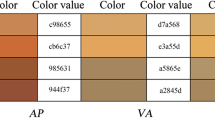Abstract
Wood is a very important byproduct, produced by different biological processes in tree. The teak and terminalia wood planks were artificially infected with white-rot causing fungi Trametes pini to know that these woods were resistant to this wood decay fungus. The decayed wood samples were studied anatomically by light microscopy and scanning electron microscopy. The both woods were not resistant to this white-rot fungus. The light microscopic studies of teak wood decayed by T. pini showed the ability to degrade vessels, fiber cells, and ray cells completely and parenchyma cells partially. Selective delignification occurred in vessels and fiber cells. Simultaneous decay occurred in ray cells and fibers cells. The light microscopic studies of terminalia wood decay by T. pini showed complete degradation of vessels, fiber cells, and rays cells completely. The hyphae of T. pini enter in both ways to accumulate in lumen and cause degradation of lignin towards the cell wall. In advanced stages, all cell wall layers were degraded completely to create a gap. The ultrastructural studies revealed that T. pini was able to degrade vessels and fibers selectively and ray cells simultaneously. The selective and simultaneous decay of cells were observed within the same section in different cells of tea wood samples by T. pini.
Access this chapter
Tax calculation will be finalised at checkout
Purchases are for personal use only
Similar content being viewed by others
References
Bakshi BK, Puri YN, Singh S (1967) Natural decay resistance of Indian timbers. I. Introduction and method. II. Decay resistance of sal (Shorea robusta Gaertn.) and teak (Tectona grandis L.f.). Indian For 93:305–328
Bhat KM, Thulasidas PK, Florence EJM, Jayaraman K (2005) Wood durability of home-garden teak against brown-rot and white-rot fungi. Trees 19:654–660
Chang ST, Hayes H (1978) The biology and cultivation of edible mushrooms. Academic Press, New York
Dill I, Kraepelin G (1986) Palo podrido: model for extensive delignification of wood by Ganoderma applanatum. Appl Environ Microbiol 52:1305–1312
Eriksson K-E, Blanchette RA, Ander P (1990) Microbial and enzymatic degradation of wood and wood components. Springer, Berlin
Etter BE (1929) New media for develo** sporophores of wood-rot fungi. Mycologia 21(4):197–203
Farmer VC, Henderson MEK, Russell JD (1960) Aromaticalcohol-oxidase activity in the growth medium of Polystictus versicolor. Biochem J 74:257–262
Findlay WPK (1985) Preservation of timber in the tropics. Martinus Nijhoff/Dr. W Junk Publ, Dordrecht
Hatakka A (2001) Biodegradation of lignin. In: Hofrichter M, Steinbüchel A (eds) Lignin, humic substances and coal, vol 1. Wiley, Weinheim, pp 129–180
Haupt M, Leithoff H, Meier D, Puls J, Richter HG, Faix O (2003) Heartwood extractives and natural durability of plantation-grown teakwood (Tectona grandis L.): a case study. Holzals Rohund Werkstoff 61:473–474
Koyani RD, Rajput KS (2014) Light microscopic analysis of Tectona grandis L.f. wood inoculated with Irpex lacteus and Phanerochaete chrysosporium. Eur J Wood Prod 72:157–164. https://doi.org/10.1007/s00107-013-0763-7
Maier TN, Schuler G, Maheler G (1999) Ganzjahrig frisches rundholz aus dem Lager,Eine neue Konservierungsmethode fur die Forst-und Holzwirtschaft. Holz-Zbl 125:1092–1094
Messner K (1998) Biopul**. In: Bruce A, Palfryman JW (eds) Forest products biotech. St. Paul
Nagadesi PK, Arya A (2014) Delignification of valuable timbers decayed by India Lignicolous fungi. Int Lett Nat Sci 16:101–120
Nagadesi PK, Arya A, Albert S (2013) Delignification pattern of wood decay by white rot fungi in teak (Tectona grandis L. f.). J Indian Acad Wood Sci 10:1–8. https://doi.org/10.1007/s13196-013-0085-8
Oldham ND, Wilcox WW (1981) Control of brown stain in sugar pine with environmentally acceptable chemicals. Wood Fiber 13:182–191
Puri YN, Singh S, Khan SN, Bakshi BK (1968) Natural decay resistance of Indian Timbers V. Indian Forester 94(8):609–619
Quélet L (1886) Enchiridion Fungorum. O. Doin, Paris, 352 p
Schmidt O (2006) Wood and tree fungi. Biology, damage, protection and use. Springer, Humberg, 334 pp
Soge A, Popoola O, Adetoyinbo A (2018) Detection of decay and hollows in living almond trees (Terminalia catappa L. Roxb.) using electrical resistivity method. J Indian Acad Wood Sci 15:181–189. https://doi.org/10.1007/s13196-018-0224-3
Thulasidas P, Bhat KM (2007) Chemical extractive compounds determining the brown-rot decay resistance of teak wood. Holzals Rohund Werkstoff 65:121–124
Wilcox WW (1964) Preparation of decayed wood for microscopical examination. U.S. Forest Service, Research Note FPL-056, Forest Products Laboratory, Madison
Yang DQ, Beauregard R (2001) Sapstain development on jackpine logs in Eastern Canada. Wood Fiber Sci 33:412–424
Acknowledgements
The authors are thankful to the Head, Department of Botany, The Maharaja Sayajirao University of Baroda for providing laboratory facilities.
Author information
Authors and Affiliations
Editor information
Editors and Affiliations
Rights and permissions
Copyright information
© 2022 The Author(s), under exclusive license to Springer Nature Singapore Pte Ltd.
About this chapter
Cite this chapter
Nagadesi, P.K., Arya, A., Albert, S. (2022). Selective and Simultaneous Delignification Capacity of Wood Decay Fungus Trametes pini in Tectona grandis L. f. and Terminalia crenulata (Heyne) Roth. In: Arya, A., Rusevska, K. (eds) Biology, Cultivation and Applications of Mushrooms . Springer, Singapore. https://doi.org/10.1007/978-981-16-6257-7_19
Download citation
DOI: https://doi.org/10.1007/978-981-16-6257-7_19
Published:
Publisher Name: Springer, Singapore
Print ISBN: 978-981-16-6256-0
Online ISBN: 978-981-16-6257-7
eBook Packages: Biomedical and Life SciencesBiomedical and Life Sciences (R0)




